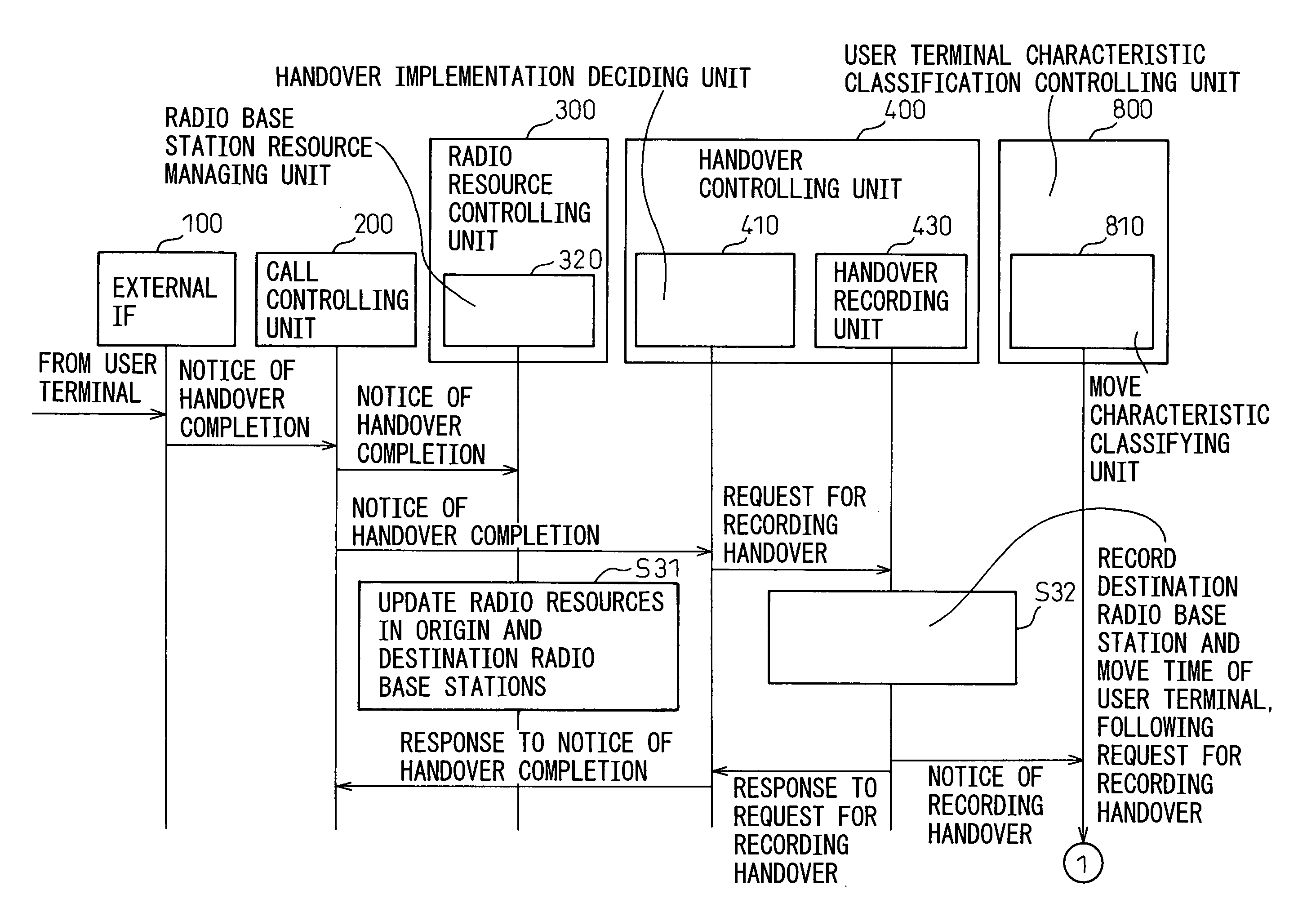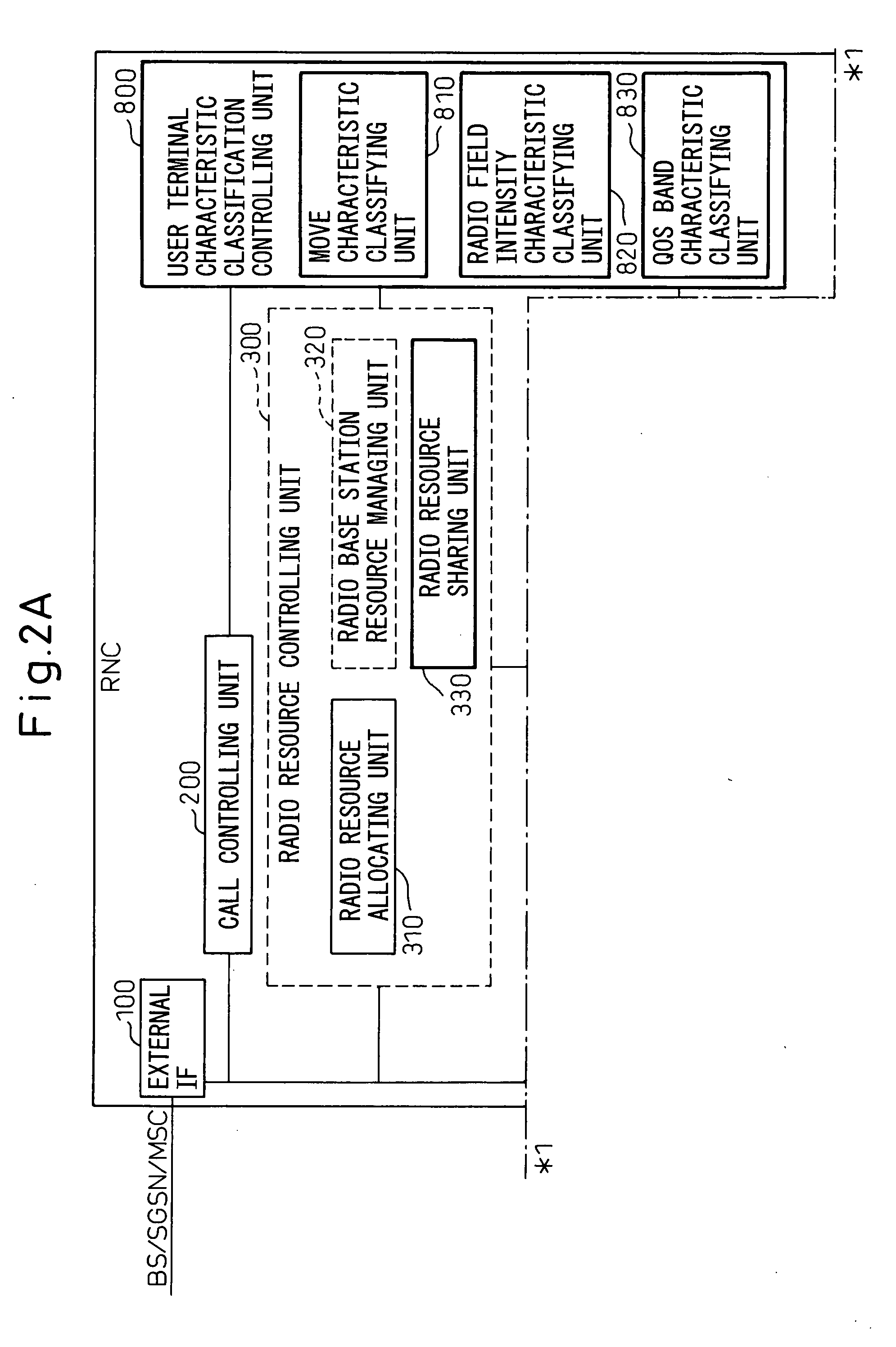Method of controlling sharing of radio resources in mobile communication system
a mobile communication system and radio resource technology, applied in the direction of network traffic/resource management, electrical equipment, selection arrangements, etc., can solve the problems of large facility investment, difficult to implement optimal installation, and large radio resource consumption, so as to uniformly distribute radio resources, and avoid congestion of radio resources
- Summary
- Abstract
- Description
- Claims
- Application Information
AI Technical Summary
Benefits of technology
Problems solved by technology
Method used
Image
Examples
first embodiment
[0100]FIG. 3 and FIG. 4 are sequence diagrams of the operation of the move characteristic classifying unit 810 within the RNC shown in FIG. 2 according to a first embodiment (corresponding to claim 2) of the present invention.
[0101] Referring to FIG. 3 when the external IF 100 completes a handover following a handover request from a user terminal UE, the external IF 100 transmits a handover completion notice to the call controller 200. The call controller 200 transmits a handover completion notice containing an identification number of the user terminal UE and destination radio base station information, to both the radio resource controller 300 and the handover controller 400.
[0102] The radio resource controller 300 sends the handover completion notice to the radio base station resource managing unit 320 in order to update radio resources used in each radio base station. The radio base station resource managing unit 320 receives this handover completion notice, and subtracts radio...
second embodiment
[0107]FIG. 5 is a sequence diagram of the operation of the radio field intensity characteristic classifying unit 820 within the RNC shown in FIG. 2 according to a second embodiment (corresponding to claim 3) of the present invention. Referring to FIG. 5, the external IF 100 receives a radio field intensity report from a user terminal UE, and transmits the radio field intensity report to the radio quality manager 700. At step S51, the radio quality manager 700 records the radio field intensity in the user terminal into the radio quality management database 710 based on a user terminal identification number and the radio field intensity in peripheral cells from the user terminal.
[0108] The radio quality manager 700 receives the radio field intensity report, and transmits the radio field intensity report to the user terminal characteristic classification controller 800, by using the user terminal identification number as additional information, in order to detect data classified accor...
third embodiment
[0110]FIG. 6 is a sequence diagram of the QoS band characteristic classifying unit 830 within the RNC shown in FIG. 2 according to a third embodiment (corresponding to claim 4) of the present invention. Referring to FIG. 6, the external IF 100 receives a call setting request from the SGSN or the MSC at the core network CN side, and transmits this call setting request to the call controller 200. The call controller 200 transmits a call information notice to the user terminal characteristic classification controller 800, the call information notice containing extracted information of a user terminal such as a user terminal identification number, QoS information, and a request band.
[0111] The user terminal characteristic classification controller 800 receives the call information notice, transmits a request for classifying data according to the QoS band characteristics, to the QoS band characteristic classifying unit 830, and prepares data classified according to the QoS band characte...
PUM
 Login to View More
Login to View More Abstract
Description
Claims
Application Information
 Login to View More
Login to View More - R&D
- Intellectual Property
- Life Sciences
- Materials
- Tech Scout
- Unparalleled Data Quality
- Higher Quality Content
- 60% Fewer Hallucinations
Browse by: Latest US Patents, China's latest patents, Technical Efficacy Thesaurus, Application Domain, Technology Topic, Popular Technical Reports.
© 2025 PatSnap. All rights reserved.Legal|Privacy policy|Modern Slavery Act Transparency Statement|Sitemap|About US| Contact US: help@patsnap.com



